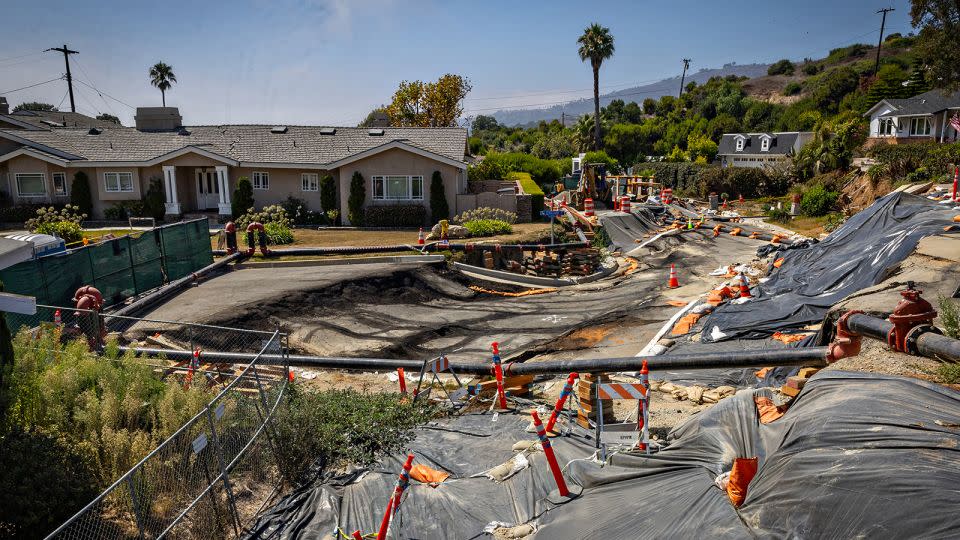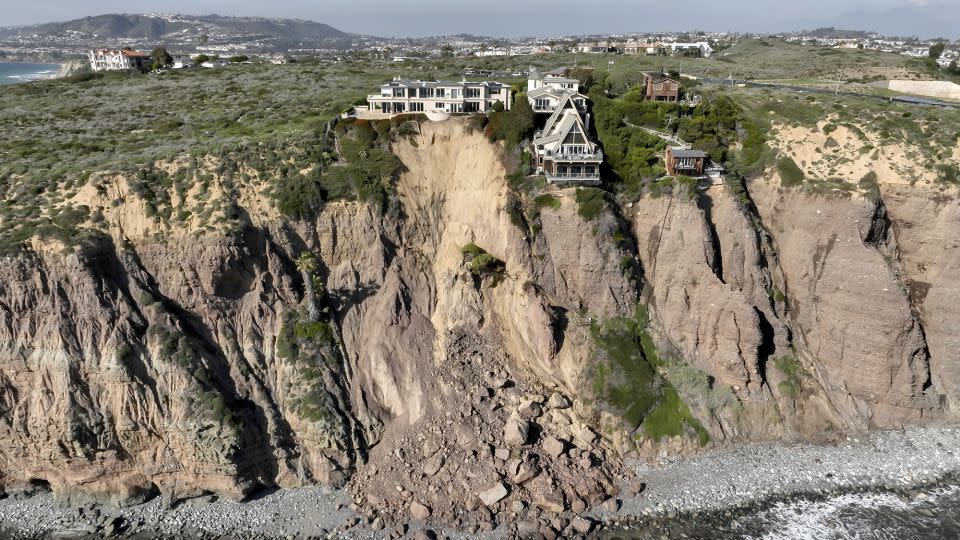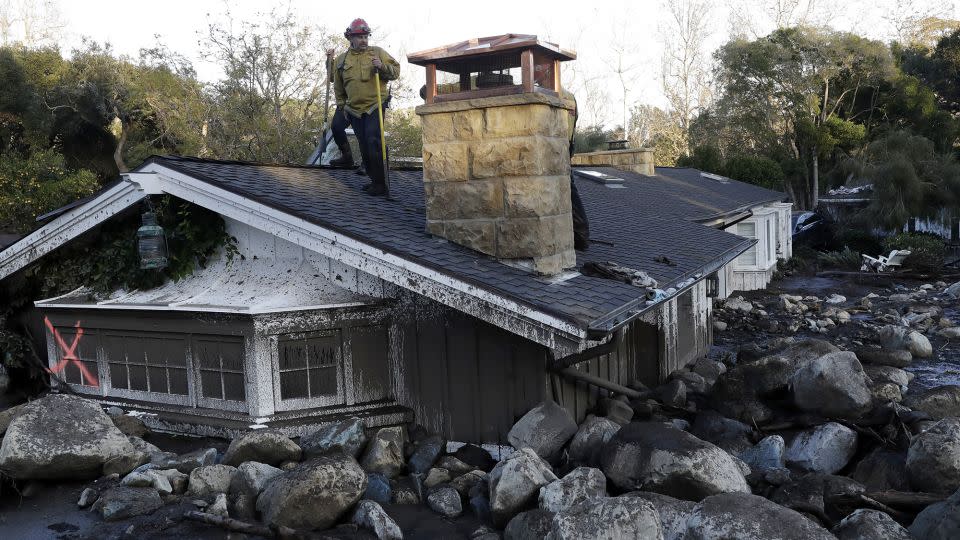The landslides deep beneath the million-dollar row houses in Rancho Palos Verdes moved at near-glacial speed, until they weren’t.
This affluent coastal city in Southern California, about 30 miles south of Los Angeles, has long attracted people with its Pacific Ocean views and lush greenery. But it sits atop a complex of slow-moving landslides that have been active since the 1950s, causing the land to shift by about a few feet a year. Recently, after heavy winter rains, the speed and scale of the movement has increased.
Last weekend, massive acceleration had dire consequences.
Houses are now spread unevenly on disturbed land, roads have buckled and power has been cut to more than 200 households. On Tuesday, the Gov. Gavin Newsom state of emergency in the city.
It is not unknown in this part of the United States to see luxurious oceanfront homes perched precariously over cliff tops or partially swallowed by the land. Landslides destroy homes, take lives and leave communities fearing for their future.
But scientists warn they are set to become more frequent as the climate crisis prompts heavier rain and more powerful storms, reshaping landscapes.

Landslides depend on three factors: the slope, the rock type and the climate, said Alexander Handwerger, a landslide scientist at NASA’s Jet Propulsion Laboratory.
Rancho Palos Verdes sits atop a bed of volcanic ash, laid down about 10 to 15 million years ago, that descends to the shores of the Pacific Ocean.
“It’s adapted to a type of clay mineral that can expand and become slippery when it gets wet,” said Gary Griggs, distinguished professor of earth and planetary sciences at the University of California Santa Cruz.
Landslides can be triggered by a variety of factors, including earthquakes and human activities. But rain is one of the most common.
When it rains, water seeps into the ground, percolating into the layers below. There, it can reduce suction and friction and clump soil or rock grains together, causing the ground to loosen and shift.
Slopes are always trying to achieve a stable angle, which depends on the type of climate they are in, said Dave Petley, an earth scientist at the University of Hull in England. If the climate changes, and the rainfall becomes heavier, the slope “may now be too steep to be stable, so it will suffer a landslide or a series of landslides to find a new stable angle, ” he told CNN.
In California the changing climate is putting pressure on the landscape to respond.
For the past two years, atmospheric rivers – long plumes of water in the sky that sweep in from the tropics – have drenched the state with rain.
In February of this year, an atmospheric river dumped a record amount of rain across southern California, triggering hundreds of mudslides and leaving at least nine people dead.
The rain ate away at cliffs; One stark image shows a small cluster of houses in Pointe na n’Dán perilously close to the rubble-strewn beach.


Scientists have found clear links between the climate crisis and heavier rainfall. A warmer atmosphere can hold more moisture, which means more intense rain or snow when it does fall, and warmer oceans have more powerful storms.
In California, climate projections suggest that the state will experience less frequent and more intense rainfall in the future, particularly from atmospheric rivers, which are expected to become more powerful as the world warms. .
The risk of landslides is clear, said Handwerger, who published a study on the subject in 2022. “We looked across the state, and we see that in years that are wetter than average, the landslides increase land.”
The climate crisis also raises other landslide risks. Rising sea levels and storm surges are eating away at cliffs. Hotter and drier summers are increasing the frequency and severity of wildfires, making the landscape vulnerable to mudslides, Griggs said.
The 2018 mudflows that swept through Montecito, killing 23 people, followed the Thomas Fire, the largest wildfire in California history at the time, which burned trees and plants.


Landslides are of course a global phenomenon, and scientists are recognizing landslide risks based on climate change around the world.
Cyclone Gabriel in New Zealand triggered more than 140,000 mapped landslides – and possibly more than 800,000 in total, according to researchers.
In July, at least 150 people were killed as a result of a landslide triggered by heavy monsoon rains in the southern Indian state of Kerala. According to a scientific analysis the rain has become at least 10% heavier due to the climate crisis.
Climate change is not the only factor increasing the likelihood of landslides; Human behavior also has an impact.
Cutting into slopes to level areas for houses or roads can weaken them and mountain sides, making both sides unstable, Ugur Öztürk, a landslide scientist at the University of Potsdam and the GFZ Research Center told Geological Sciences of Germany.
Because too much water can be added to the ground, Griggs said. In Southern California, “people wanted to pretend they lived in the tropics,” he said, “and they planted a lot of landscapes that needed a lot of water.”
Deforestation is another factor. The roots of trees and plants hold the soil together and if they are destroyed it can destabilize the land, said Petley of the University of Hull.
But, he said, “climate change is critical.”
For those living in Rancho Palos Verdes, where the ground is now moving up to 12 inches a week, the future of their community hangs in the balance. It is not clear when the movement will slow down, or if they can save their homes from being torn down.
For more CNN news and newsletters create an account at CNN.com